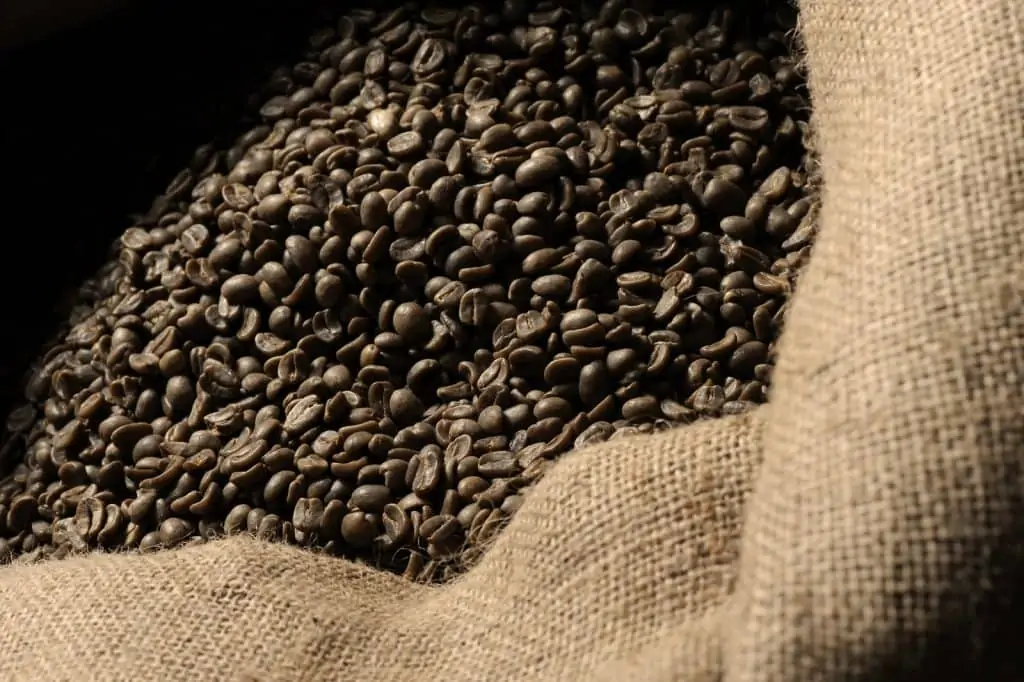You head to a coffee shop, and you’re looking at the beverage menu. The first two options on the menu are Arabica and Columbian coffee, and you’re wondering which one you should order, but you don’t know the difference between the two, and therefore, you aren’t sure which one to order.
To choose the option that will best suit your taste, you need to understand the difference between the two.
So, what’s the difference between Arabica and Columbian? Do their tastes differ? How are they brewed? Which one is stronger? To find the answers to these questions and other helpful information about Arabica and Columbian coffee, keep reading.
What is Arabica Coffee?
As the name suggests, Arabica coffee originated in Arabia, the Arabian Peninsula, to be exact, where the soil is unique in that it is particularly rich, which is why the coffee is so flavorful. Arabica coffee is dark and thick, and it tends to be more robust than similar varieties of coffee beans. It has hints of vanilla, honey, and even fruit tones, hence why it is considered the sweetest and one of the most beloved coffees in the world.
Though it originated in Arabia, Arabica beans are now grown around the world. No matter where it is grown, the growing conditions are the same:
- The soil is volcanic.
- The humidity levels are high.
- The region receives ample amounts of rain.
Two of the most common regions outside of Arabia where these coffee beans are grown are South America and Hawaii. These two locations meet all of the criteria for growing these beans.
What is Colombian Coffee?
Recall how we mentioned that Arabica coffee beans are grown all across the globe and that South America is one of the biggest producers of these types of beans? Well, Columbian coffee is Arabica coffee that is grown in Colombia. The growing conditions in Columbia are perfect for Arabia beans; the soil is volcanic, and thus, it is extremely rich. Additionally, the area receives ample amounts of rainfall, and the humidity levels are quite high year-round. These factors combined mean that this South American country is a perfect location to grow Arabica coffee beans.
The fact that these Arabica beans are grown in Columbia isn’t the only thing that distinguishes this variety from beans that are grown in Arabia. An additional step is taken when the beans are processed, which has a significant impact on the flavor of the beans.
What is that extra step?
During the preparation process, the coffee beans are washed with sterile water, which purifies the beans and helps to reduce the acidity level of the coffee. Additionally, washing the beans during the preparation process helps to cut the caffeine levels.

What Is the Taste Difference Between Arabica and Columbian Coffee?
Since the only difference between Arabica and Columbian coffee is where the beans are grown and the fact that Columbian coffee beans are washed when they are processed, you might be wondering if they taste different. Yes, actually, they do!
Arabica coffee beans tend to have fruit tones with hints of vanilla and honey, which gives beverages that are made of these beans sweet. Arabica coffee is also slightly acidic.
Columbian coffee beans are less acidic, and the caffeine content is lower, thanks to the fact that the beans are washed with sterile water when they are processed. This so-called “wet washing” process makes the flavor profile of Columbian coffee a bit smoother. It also reduces the caffeine content. Columbian coffee has a sweetness to it, and there is a hint of chocolate-like undertones; fruit flavors, such as apples or berries, can also be tasted, and even caramel.
How Do You Brew Arabica and Columbian Coffee?
Is there a difference between the way in which Arabica and Columbian coffee beans are brewed? Nope. Both varieties of coffee beans can be brewed exactly the same way. A French press, a percolator, a vacuum/siphon pot, a basic manual pour-over coffee maker, or any type of espresso maker can be used to brew both Arabica and Columbian coffee.
Which method should you use for which type of bean? It really depends on your preference and what type of flavor experience and caffeine content you are looking to have. For instance, if you’d like a stronger, more robust flavor and a jolt of caffeine, you might want to brew espresso, and if you’d like a smoother, lighter, and less robust flavor, then a percolator may be the right choice for you.
Which is Stronger: Arabica Beans or Columbian Beans
So, which type of coffee is stronger: Arabica or Columbian?

As discussed above, Arabica beans are stronger, both in regard to taste and caffeine content. Because Columbian coffee beans (which are Arabica coffee beans that are grown in Columbia) undergo the additional step of being washed with sterile water when they are processed, these beans have a smoother, milder flavor.
The washing process helps to reduce the caffeine content, too. So, if you enjoy a stronger cup of coffee that has a more robust flavor profile and a higher caffeine content, then Arabica would be a better choice for you. If, however, you’d prefer a smoother, milder cup of coffee that doesn’t pack as much caffeine (Is there caffeine in cappuccino?), then a cup of Columbian coffee would be a better suit your taste.
You can get either coffee as light or dark roasted variants depending on the coffee brand. Many brands also offer both Colombian and Arabica beans as Italian or French roast.
What Does It Mean When Coffee is “Wet Processed”?
As mentioned, the major key difference between Arabica and Columbian coffee (other than the location where the coffee beans are grown) is the manner in which they are processed. During the processing of Columbian coffee, the beans go through an additional step known as “wet processing.” What does that mean? Let’s take a look.
Coffee beans can be processed in several different ways, and two of the most commonly used methods are known as “dry processing” and “wet processing.” In order to understand each process, it’s essential to know where coffee beans come from. The beans themselves come from a coffee bean plant, which is a type of bush or shrub that looks similar to a berry bush or even a grapevine.
Even though they’re called “beans,” they actually aren’t. Instead, coffee beans are a stone fruit, known as a cherry, and they feature two stones in the middle with their flat sides joined together. The fruit is called a bean because that’s what it resembles. The names indicate the process that occurs during each method.
Dry processing, also known as “natural” or “unwashed” processing, is the most traditional and oldest method used to process coffee beans. Immediately after they are harvested from the plant, the cherries are separated from the chaff through a process known as winnowing. Next, the cherries are placed on a flat surface and placed in the sun, where they are allowed to dry. The beans are turned over three times a day during the drying process, and it takes about two to three weeks for the drying process to be completed. During the final step, the outer layers of the cherries are removed, usually mechanically, which reveals the coffee beans that are located inside the fruit.

The wet method, on the other hand, involves washing the cherries. It’s a newer method, and it’s more complex, as it involves more steps. After the cherries are harvested from the plant, the cherries are immersed ins sterile water, which separates the ripe beans from the unripe beans; the unripe beans will float on top of the water. Next, mechanical equipment and fermentation tanks are used to remove the pulp that surrounds the beans. Lastly, the beans are washed and dried until they reach a humidity level of about 11 percent. During drying, natural enzymes and bacteria feed off the pulp, and the coffee bean ferments. Wet processing leads to coffee beans that are cleaner, don’t taste as earthy, are less acidic, and aren’t as strong.
Arabica coffee beans are dry-processed, while Columbian coffee beans are wet-processed. The processing methods that are used are responsible for flavor differences between each type of coffee. Arabica coffee is stronger, more acidic, and has a more earthy, bitter, robust, and hardy flavor, and has higher caffeine content. Columbian coffee, on the other hand, is milder, smoother, and is less caffeinated.
Which process is better? There isn’t a right or wrong answer, and it depends on your particular taste preference. One method isn’t remarkably better than the other, as each one yields very different results. If you enjoy a cup of coffee that has more body, is more complex, and is stronger – both in flavor and in caffeine content – dry processing (or the Arabica bean) would be well-suited to your taste. If you like more clarity in your coffee, less acidity, a smoother flavor, and lower caffeine content, thy wet processing method (or the Columbian mean) would be the better option for you.
Is there a Price Difference Between Columbian and Arabica Coffee Beans?
In addition to the taste difference from bean to bean, you may be wondering if there is a price difference between Arabica and Columbian coffee. The short answer to that is yes. There is a price difference.
The Columbian coffee bean is more expensive than the Arabica coffee bean.
Why? – Because of the processing method.
As discussed above, Columbian coffee is wet-processed, which is more complex, involves more steps, and requires more tools and labor. Because more steps, materials, and work is involved with wet processing, naturally, the price of the Columbian coffee beans is higher than the cost of the Arabica coffee beans.
Is it worth paying more for Columbian coffee, then? That is a matter of your personal preference. If you enjoy a smoother, less earthy and acidic, and less caffeinated coffee, Columbian coffee is undoubtedly the way to go, and indeed you would find that the added expense would be worth your while.
Summing It Up
While Arabica and Columbian coffee are essentially the same, the location where they are grown and the processing method that is used are what separates the two types of beans. They are both excellent, and the one that will better suit your taste depends on your unique preference.


